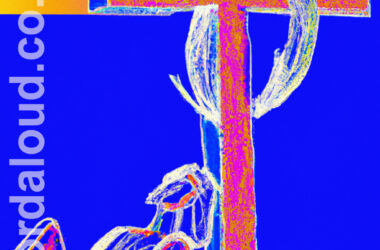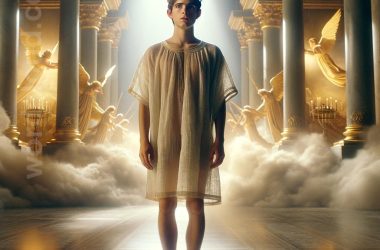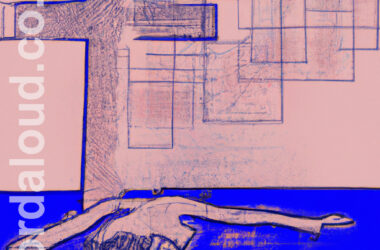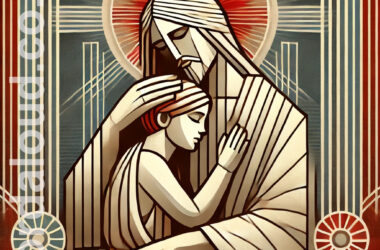This poem challenges the convention that poetry must rely on embellishment, elaborate imagery, or artifice to be meaningful or beautiful. Herbert begins with rhetorical questions that critique the idea that only fiction or outward, artificial beauty can be the subjects of verse: ‘Who says that fictions only and false hair / Become a verse? Is there in truth no beauty?’ This opening begins the thought of Herbert’s argument that truth and simplicity have their inherent worth in poetry [ … ]
George Herbert | The Temple
George Herbert | The Temple | The Temper (2) | Church | Christian Poems | Metaphysical Poetry
The poem explores themes of divine presence, spiritual longing, and human instability. The poem opens with a stark reflection on the transient nature of spiritual joy and the sudden void that follows when such joy is absent. Herbert questions the disappearance of an overwhelming sense of divine joy that had recently consumed his heart, seeking an explanation or resolution from God. This inquiry sets the stage for a meditation on the balance between divine grace and human imperfection [ … ]
George Herbert | The Temple | The Church | Love (2) | Christian Poems | Metaphysical Poetry
This poem is a meditation on divine love and its transformative power. Herbert calls upon an ‘Immortal Heat’, a metaphor for God’s eternal love, to burn away human desires, preparing the soul for a purified relationship with the divine. Herbert asks that this heavenly fire ‘attract the lesser to it’, symbolizing the hope that earthly passions, with all their distractions and imperfections, will be drawn into the higher, refining flame of divine love. The fire that ‘shall consume the world’ is a vision of divine judgment or renewal that should first be felt within, turning Herbert’s own heart toward a sincere devotion [ … ]
George Herbert | The Temple | The Church | Love (1) | Christian Poems | Metaphysical Poetry
In this poem, Herbert reflects on humanity’s misplaced admiration and affection, which is directed at transient, earthly beauty rather than at God, the ‘Immortal Love’ and creator of all things. The poem begins by acknowledging God as the creator of the world’s beauty—a beauty that ‘can never fade’—and contrasts this with humanity’s inclination to direct love toward earthly, perishable objects. Humanity’s focus on ‘mortal love’ instead of divine love results in a separation from God, as people are captivated by temporary creations rather than the Creator [ … ]
George Herbert | The Temple | The Church | Antiphon (1) | Christian Poems | Metaphysical Poetry
The poem emphasizes universality and inclusivity of divine worship, suggesting that the entire world resounds with praise for God. The refrain, ‘Let all the world in every corner sing, / My God and King,’ creates a communal call to worship through the poem [ … ]
George Herbert | The Temple | The Church | Holy Communion | Christian Poems | Metaphysical Poetry
This poem centres on themes of spiritual nourishment and intimate connection between the divine and the individual soul. The poem begins by contrasting superficial wealth, symbolized by ‘rich furniture’ and ‘a wedge of gold’, with the poet’s experience of spiritual fulfilment. Here, material objects hold no power to convey the divine presence. Instead, the poet emphasizes a more personal and humble approach: sustenance provided by Christ in the Eucharist, which enters into the poet ‘by the way of nourishment and strength’. This nourishment implies a steady, almost unseen influence that fills the body and soul, offering rest and inner strength while combating the forces of sin [ … ]
George Herbert | The Temple | The Church | Prayer (I) | Christian Poems | Metaphysical Poetry | Love Of Jesus Christ
The poem is a meditation on the nature of prayer. It is a sonnet with no narrative or direct progression, composed of sixteen images, each evoking different dimensions of prayer. There is no main verb in the poem; it flows as a series of phrases that describe prayer without explicitly saying what it does. A list of metaphors feels simultaneously boundless and encompassing, as Herbert seeks to communicate prayer’s role, impact, and place within the human and divine realms [ … ]
George Herbert | The Temple | The Church | Repentance | Christian Poems | Metaphysical Poetry
The poem explores themes of human frailty, sin, repentance, and divine mercy. The poem reflects on the brevity and vulnerability of life, contrasting human weakness with the power of God’s compassion. The poet, Herbert, begins by confessing the greatness of his sin and acknowledging the fleeting nature of human existence. The image of life as a ‘quick flower’ or ‘momentary bloom’ emphasizes this transience. Life is presented as something that is constantly ‘undressing’ or stripping away, ultimately leading toward death, which is depicted as the inevitable destination [ … ]
George Herbert | The Temple | The Church | Affliction (1) | Christian Poems | Metaphysical Poetry
The poem explores the spiritual journey of the poet, George Herbert, reflecting Herbert’s initial enthusiasm for the religious life and his later struggles with faith, disappointment, and suffering. The poem opens by recalling the poet’s early attraction to divine service, which he finds ‘brave’ and full of joy. He describes an idealized experience of religious devotion, where he expected to receive numerous blessings, both from his natural pleasures and the added benefits of God’s grace. At this stage, the poet sees everything in a positive light, imagining that both heaven and earth will provide him with endless happiness [ … ]
George Herbert | The Temple | The Church | Easter-Wings | Christian Poems | Metaphysical Poetry
The poem reflects a meditation on human suffering and redemption, as well as a call for divine assistance to transcend the human condition. It is structured in two stanzas, each beginning with the poet’s reflection on human limitations, followed by a plea for union with God, and concluding with a hope for spiritual elevation [ … ]










